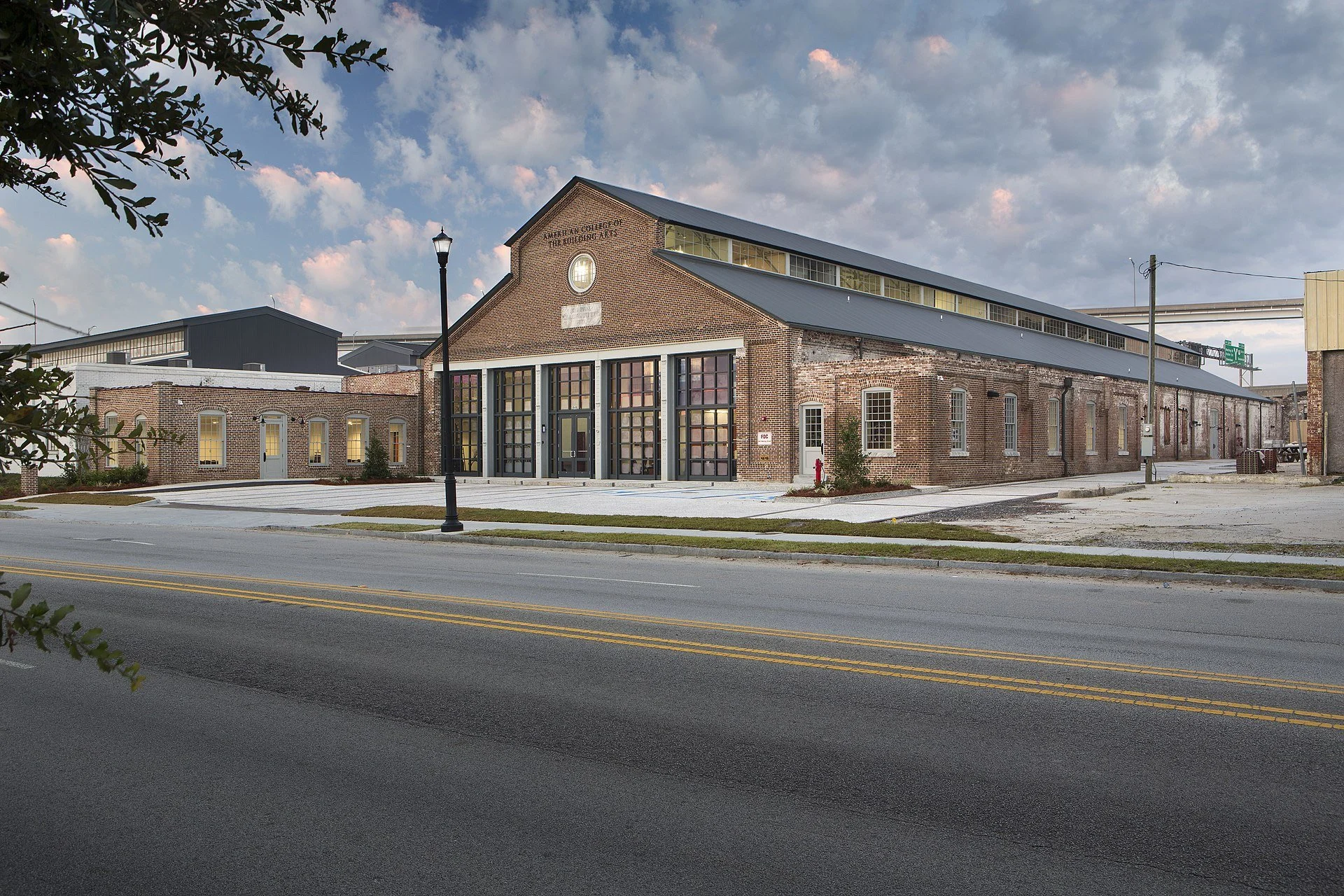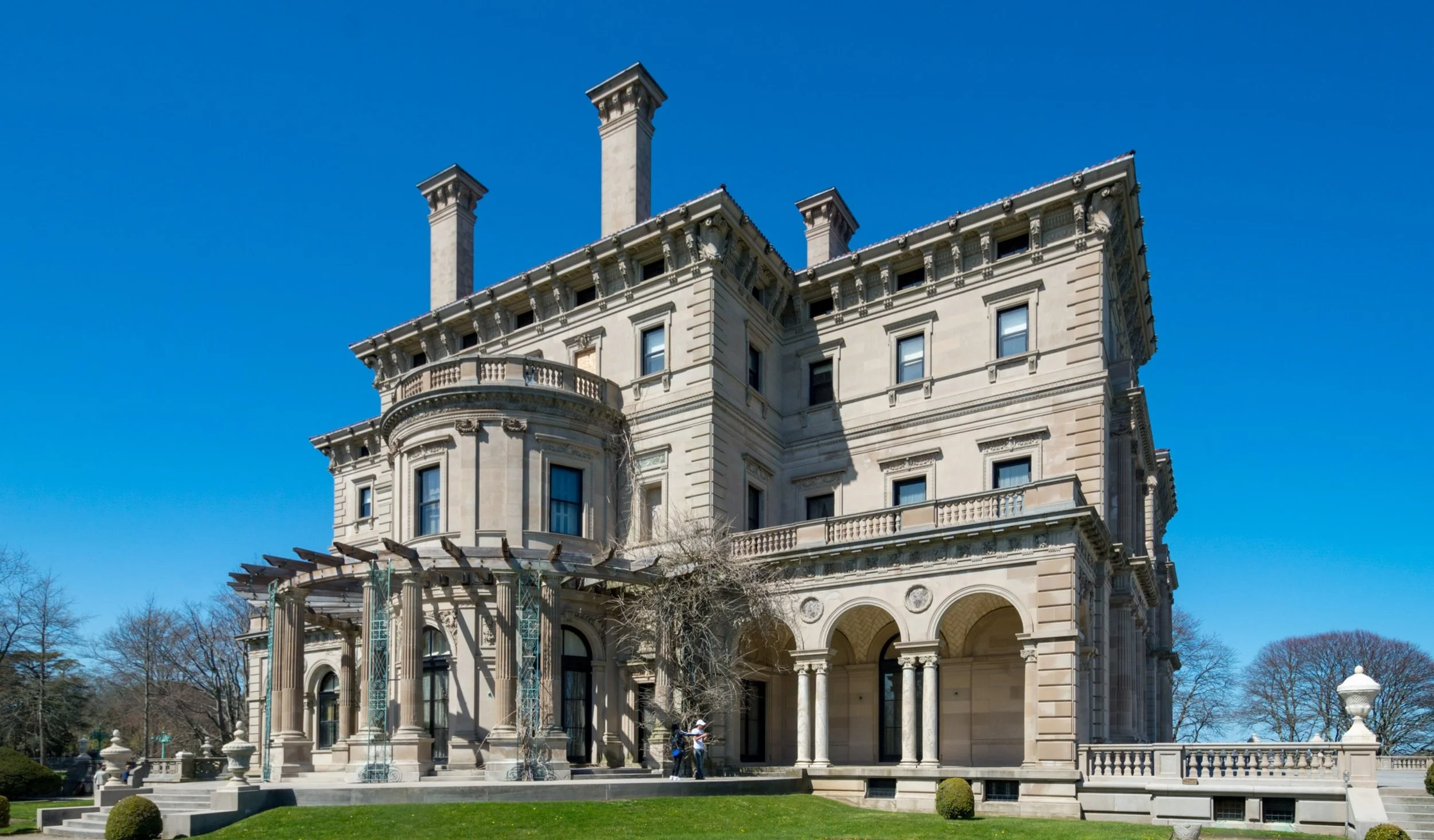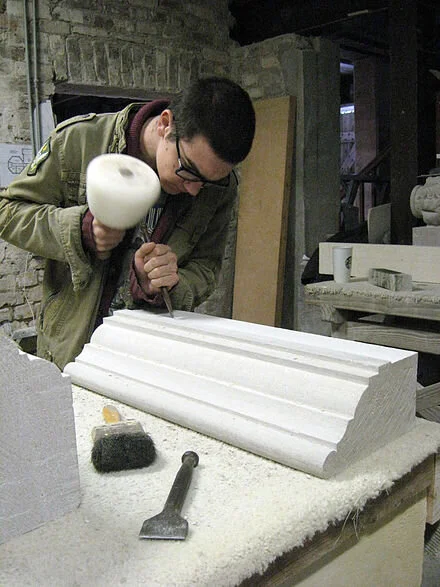The American College of the Building Arts, in Charleston, S.C.
The Breakers, the famed Newport mansion, and the other great “cottages in the city, provide work for the sort of artisans traded by the American College of the Building Arts.
WEST WARWICK, R.I.
It takes years to learn to fashion something out of a block of stone. You may think that you have talent, but it isn’t intuitive. You have to study stone carving, take up the mallet and chisel, waste a lot of rock, and gradually turn from novice to craftsman.
Likewise, you won’t learn the delights of English literature in a week. It takes time.
All of this can be accomplished in one extraordinary place: the American College of the Building Arts, in Charleston, S.C. — a jewel of the South with its many antebellum mansions and other buildings, making it a place of living history.
The college offers a full liberal-arts curriculum plus a specialization in one of six building arts: Classical architecture, blacksmithing, timber framing, carpentry, plaster and stone-cutting. It owes its existence to Hugo, the Category 4 hurricane that slammed into Charleston and much of the rest of the Carolina coast in 1989. Many of Charleston’s treasured homes and buildings were damaged.
Then came the second heartbreak: There was a dearth of craft workers who could put Charleston, like Humpy Dumpty, back together again. The shortage was so acute that it took more than 10 years to restore the city to what it had been pre-Hugo.
The civic pride of the city asserted itself. A group of shocked citizens vowed they wouldn’t go through that again. They would train fine artisans right there in Charleston. But they didn’t want just a trade school; they wanted a seat of learning and restoration to be part of that learning.
They didn’t want to turn out graduates who felt that they had to go through life entering through the back door. No. These would be graduates with a robust degree in liberal arts, as comfortable reading Shakespeare as helping restore a European cathedral built in his day.
So, the American College of the Building Arts was born, in 1999, and it is flourishing and growing. By college size standards, it is minuscule: 120 graduates this year. But in terms of educational creativity, it is huge. It shines a light that shows the way to a new concept of education: students learning a trade they enjoy, that is highly marketable, and also getting the benefits of four years of liberal-arts education.
In April 2018, I visited the college to film an episode of White House Chronicle, on PBS, and was captivated. I had never seen anything like it: a slight young woman working at a 2,000-degree forge, making a beautiful piece of decorative ironwork, inspired by work in a French cathedral; a woman, who had had a previous career in the Coast Guard, carving stone, with an ambition to work on the National Cathedral, in Washington; and a gifted African-American man, a former Marine who had traveled the world, working with big timbers in the framing shop.
Because I have an interest in words, I sat in on a literature course wondering secretly whether it was, perhaps, a bit cursory. It wasn’t. The former Marine timber-framing student said the literature course, taught by Wade Razzi, who has a doctorate degree from Oxford, was his favorite, and among the authors he loved was Charles Dickens.
A friend’s daughter was attracted to the college after learning about it from my television episode. He credits the college with having done wonders for her. She is a star stone carver there, likely headed to work on Liverpool Cathedral.
The college is a beacon for these reasons:
It gives its students a sense of purpose they might not have found otherwise: The reward of making something special and durable.
The college accepts men and women, although Razzi told me women were often the stars. Twenty-five percent of the students are women, and they lead in valedictorians. Five percent are veterans.
About a third of the students, within five years of graduating, start their own contracting businesses. This is so prevalent that the college has added accounting courses so that the young entrepreneurs can keep books.
The college must teach one foreign language, and that is Spanish. In a recent episode of White House Chronicle on the college, Razzi said Spanish is taught because it is essential in the building trades, where many workers are from Latin America.
One of the college’s biggest challenges is recruiting faculty, Razzi, who also serves as chief academic officer, said in that TV episode. Many faculty members come from Europe to teach arcane-in-America trades such as decorative plaster, stone carving and blacksmithing.
Some of these trades are arcane but in great demand from Newport, R.I.’s mansions – called “cottages’’ — to the National Cathedral and the Capitol, to memorial gardens. Artisans are in demand and artisans with liberal-arts credentials are something special: roundly skilled and roundly educated.
On Twitter: @llewellynking2
Llewellyn King is executive producer and host of White House Chronicle, on PBS. He’s based in Rhode Island and Washington, D.C.
American College of the Building Arts junior carving a stone mantle.






















